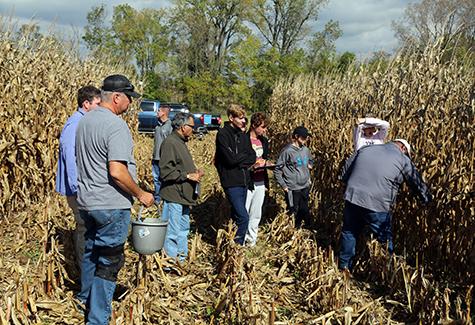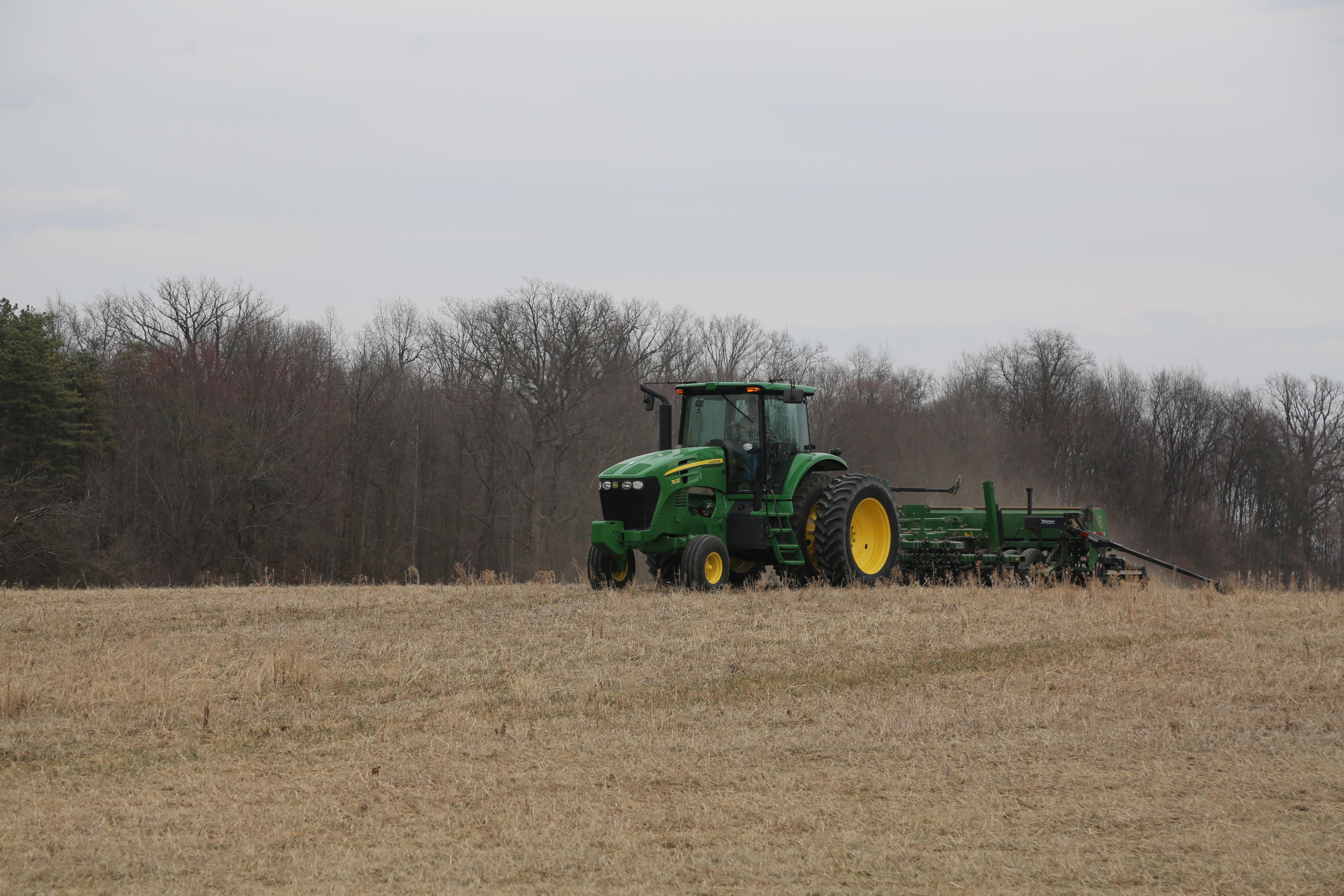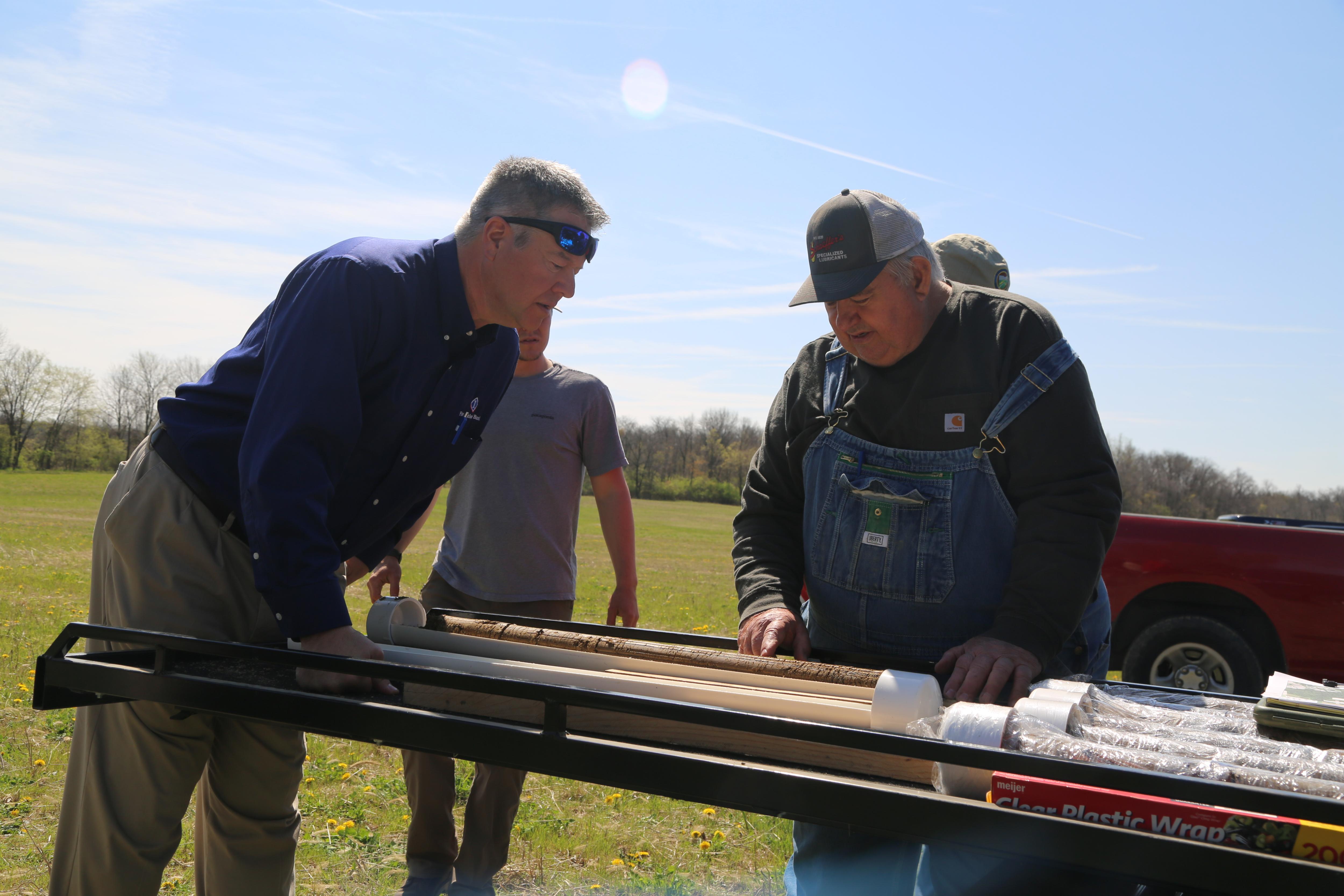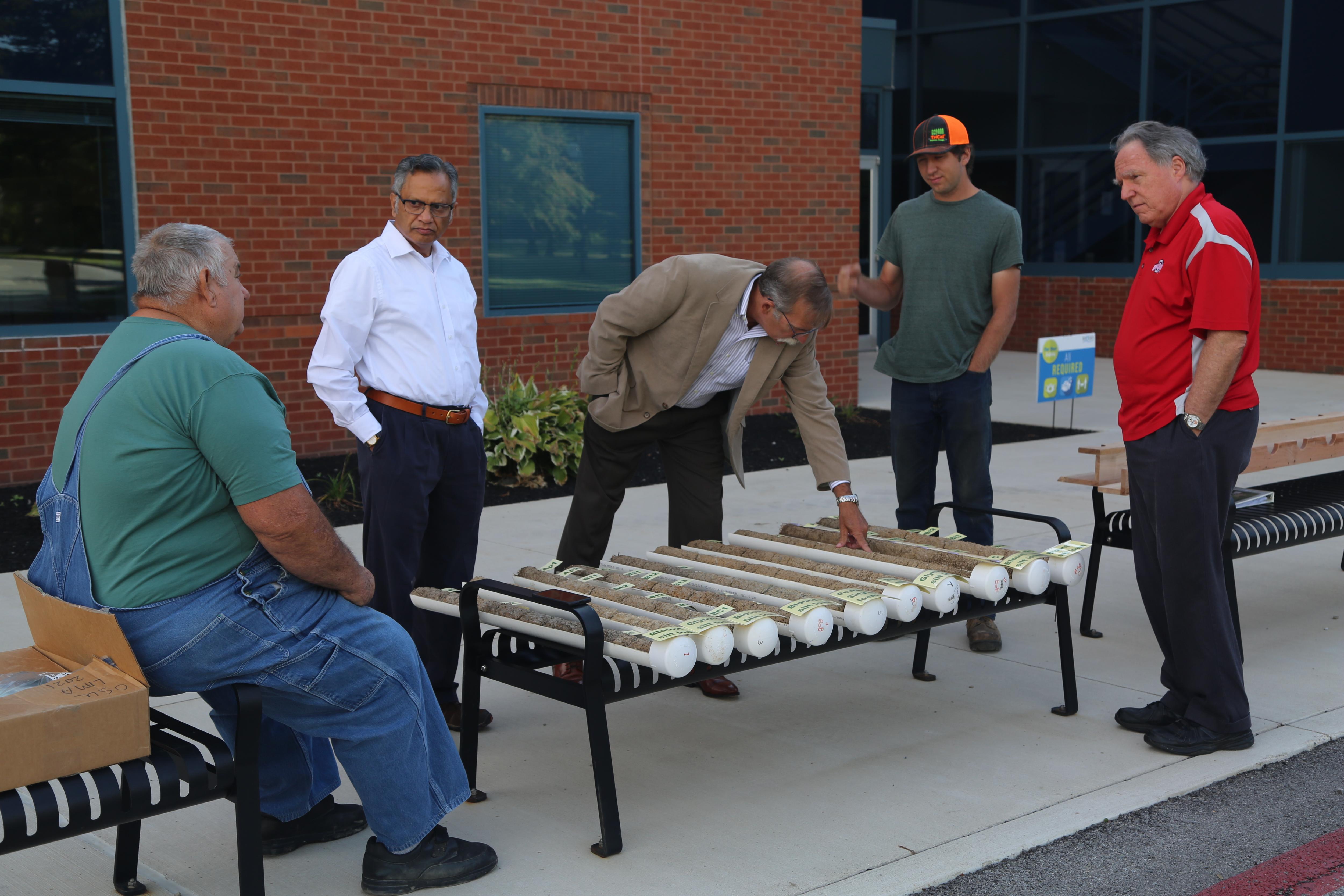The first year of the regenerative farming experiment at The Ohio State University at Lima is in the books. As is appropriate with experiments and particularly experiments at a university, lessons were learned.
Foremost, the season ended up in the black despite lower yields. The lower inputs called for with regenerative practices made up the difference, despite the best efforts of the campus wildlife, which were very busy in the corn fields.
Despite some of the adventures that come with any new endeavor, farmer Todd Mason (BS Ag Economics, 1985) is happy to try out new things that can help others in the future.

“We are a land-grant college. I hope we use this land to document regenerative farming practices and show how we can improve soil composition, stop erosion, and water runoff, build soil biomass and reduce overall cost by replacing commercial fertilizer with natural elements,” he said.
In the coming years, Mason will begin including more and different cover crops to improve water filtration, organic material, erosion and nutrient distribution. Coupled with the cover crops to add organic materials, Mason will also be utilizing a three-year crop rotation of soybeans, wheat and corn.
As a social worker by background, the project is outside of Dean and Director Dr. Tim Rehner’s usual wheelhouse so his learning curve has been sharp. While the mechanics and timing of farming have been new and exciting to, wait for it, dig into, Rehner knows that it is not just the soil, the water and all the other inputs that will make the farm a success.

“I learned that the farming process is both a science and an art. I was also reminded that the people are what make projects successful,” Rehner said. “I am grateful for the many people from various parts of our local community and the ones from the Columbus area that invested of themselves in this regenerative agricultural experiment, particularly Todd Mason and David Brandt. This campus farm would not have been possible without them.”
Learn more about David Brandt and regenerative ag
Mason has been very interested in what long-time regenerative farmer Brandt has suggested to improve the soil outlook. He also likes how the team around the farm project came together. The baseline information they have gathered on the farm’s soil composition and needs will make it easier to develop a roadmap to improve the fields.
“It was extremely exciting to see the team that Dean Rehner put together learn and grow throughout the project,” Mason said. “We were able to start a project from ground zero, develop a plan and execute that plan. The process also enabled us to develop a multiyear plan that will improve water quality, improve soil biomass and reduce erosion.”
Mason plans to implement the techniques to build soil quality and give the crops the nutrients they need without widespread commercial fertilizer use at his home farm.
“We have been pulling out nutrients from our soil by raising crops. We put those back with commercial fertilizers,” he said. “This is not the best for our environment and is costly. Building soil quality and composition naturally is a plan we must embrace, and I plan to implement these practices on my farm.”



